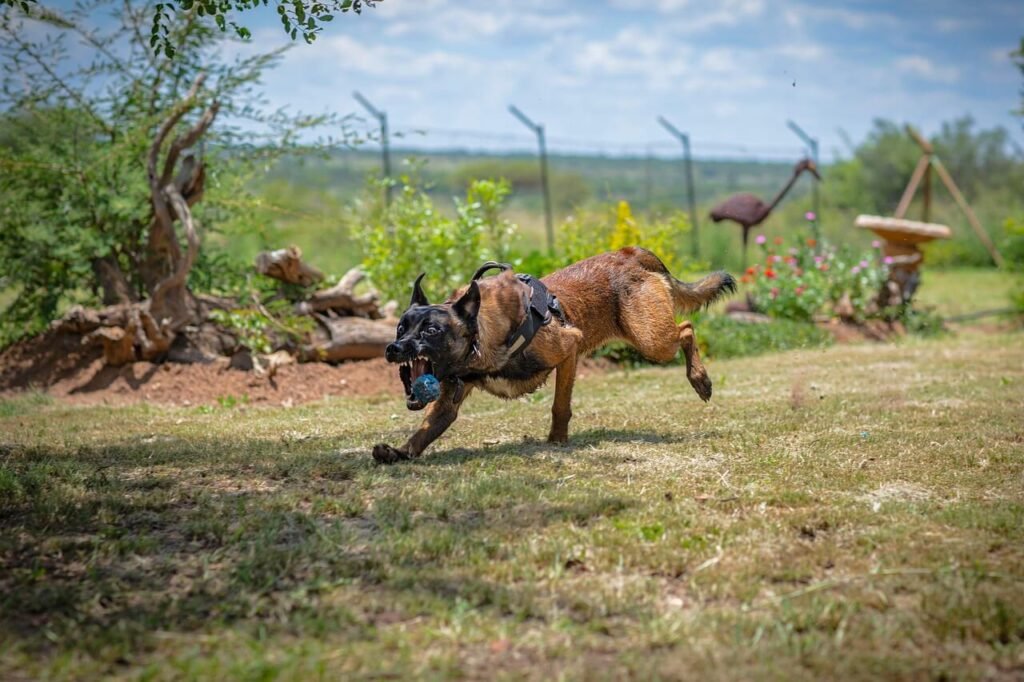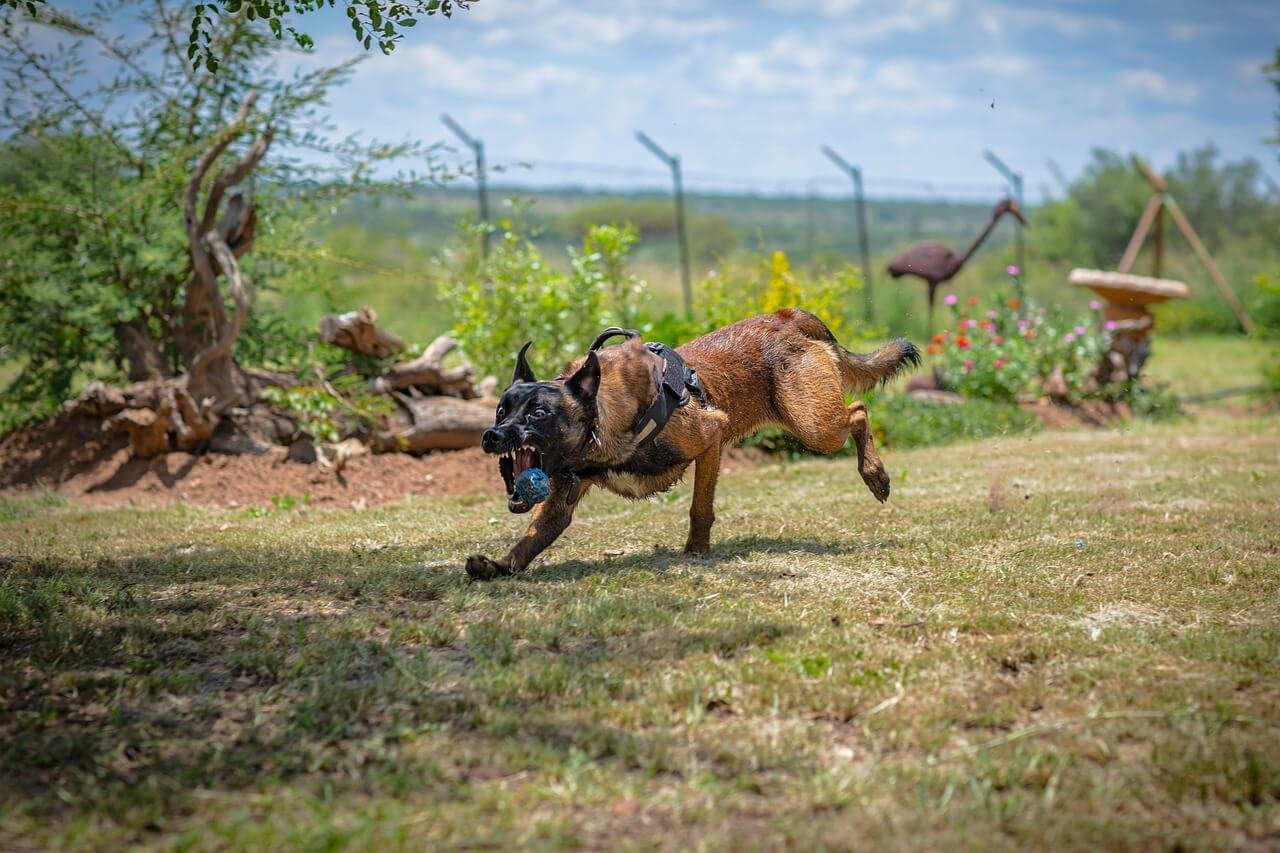Are Belgian Malinois Protective? Understanding Their Guardian Instincts
The Belgian Malinois is renowned for its intelligence, agility, and unwavering loyalty. Often seen working alongside law enforcement and military personnel, these dogs are celebrated for their versatility and dedication. One of the most frequently asked questions about this breed is whether they are protective. The short answer is yes—Belgian Malinois are naturally protective, but their guarding instincts require proper nurturing and training to ensure they act appropriately in various situations. In this blog post, we’ll explore the protective nature of Belgian Malinois, how it manifests, and what you need to know to raise a well-balanced guardian dog. Whether you’re considering adopting one or simply curious about their temperament, this guide will provide valuable insights into their protective behavior.
Why Are Belgian Malinois Naturally Protective?
The protective instincts of Belgian Malinois stem from their origins as herding and working dogs. These traits have been honed over generations, making them exceptional guardians. Here’s why this breed exhibits such strong protective tendencies.
Herding Heritage:
Originally bred to protect livestock and farms, Belgian Malinois developed a natural instinct to guard and defend their territory.Strong Bond with Owners:
They form deep attachments to their families, viewing them as part of their “pack,” which motivates them to protect their loved ones fiercely.High Alertness Levels:
Belgian Malinois are incredibly vigilant, always aware of their surroundings, and quick to respond to potential threats.Work Ethic and Drive:
Their innate desire to work and please their handlers makes them eager to take on protective roles when trained properly.Fearlessness and Confidence:
Known for their bold personalities, Belgian Malinois rarely back down from challenges, making them reliable protectors.
These inherent qualities make Belgian Malinois excellent guardians, but their protective nature must be channeled through training to avoid overprotectiveness or aggression.
Signs Your Belgian Malinois Is Being Protective
If you own or are considering adopting a Belgian Malinois, it’s important to recognize the signs that indicate their protective instincts are at play. These behaviors can range from subtle to overt.
Barking at Strangers:
They may bark loudly to alert you of unfamiliar people or animals approaching your property.Positioning Themselves Between You and Others:
A protective Malinois will often stand between you and someone they perceive as a threat.Increased Vigilance Around Family Members:
They become more attentive and stay close to family members, especially in unfamiliar environments.Growling or Staring Down Perceived Threats:
While not aggressive by default, they may use body language to communicate discomfort or warning.Pawing or Nudging During Suspicious Activity:
Some Malinois will physically interact with their owners to draw attention to potential dangers.
Understanding these signs helps you differentiate between appropriate protectiveness and problematic behavior, ensuring a harmonious relationship.
Check this guide 👉Do Belgian Malinois Like Water? Best 7 Expert Tips!
Check this guide 👉Do Belgian Malinois Shed a Lot? Best 7 Health Tips!
Check this guide 👉Are Belgian Malinois Hypoallergenic? Best 7 Expert Tips!

Pros of a Protective Belgian Malinois | Cons of Overprotectiveness |
|---|---|
Excellent guard dog for home security | May become territorial without training |
Forms strong bonds with family members | Risk of aggression toward strangers |
Highly alert and responsive to threats | Requires constant supervision in public |
Loyal and devoted companion | Can develop separation anxiety |
Natural deterrent for intruders | Needs experienced handling and guidance |
How to Train a Belgian Malinois for Protection Work
Training a Belgian Malinois to harness their protective instincts requires patience, consistency, and expertise. If done correctly, they can excel in protection roles while remaining obedient and well-mannered.
Start with Basic Obedience Training:
Before focusing on protection, ensure your Malinois has mastered commands like “sit,” “stay,” and “come” to establish control.Socialize Them Early:
Expose your dog to different people, animals, and environments to prevent fear-based aggression or excessive suspicion.Use Positive Reinforcement:
Reward good behavior with treats, praise, or toys to encourage cooperation during training sessions.Teach Controlled Guarding Behaviors:
Practice scenarios where your Malinois learns to guard specific areas or items only when instructed.Seek Professional Help if Needed:
Enlist the help of a professional trainer specializing in protection work to refine advanced skills safely.
With structured training, your Belgian Malinois can become a disciplined and reliable protector.
Tips for Managing a Belgian Malinois’ Protective Nature
While their protective instincts are admirable, managing a Belgian Malinois’ behavior is crucial to maintaining balance in your household. These tips will help you keep their guarding tendencies in check.
Provide Plenty of Exercise:
A tired Malinois is less likely to exhibit unwanted protective behaviors out of boredom or excess energy.Set Clear Boundaries:
Teach them which areas or people are off-limits to avoid unnecessary territorial disputes.Avoid Encouraging Aggression:
Never praise or reward growling or snapping, as this reinforces negative behavior.Practice Desensitization Techniques:
Gradually expose them to triggers (e.g., doorbells or visitors) in a calm manner to reduce overreactions.Monitor Interactions with Guests:
Supervise meetings between your Malinois and unfamiliar guests to ensure everyone feels safe and comfortable.
By implementing these strategies, you can foster a healthy balance between protectiveness and sociability.
Common Misconceptions About Belgian Malinois’ Protectiveness
There are several myths surrounding the protective instincts of Belgian Malinois. Clarifying these misconceptions ensures realistic expectations for potential owners.
They Attack Without Reason:
With proper training, they only react defensively when necessary, not randomly.All Malinois Are Born Guard Dogs:
While they have protective tendencies, their skills must be cultivated through structured training.They’re Not Suitable for Families:
When raised correctly, they can be loving, loyal companions for households with children.They Don’t Need Socialization:
Socialization is critical to prevent fear-based reactions and ensure they interact well with others.Only Professionals Can Handle Them:
While challenging, dedicated amateurs can successfully manage their instincts with research and effort.
Understanding these truths sets the foundation for a successful relationship with your Malinois.
Activities That Channel a Belgian Malinois’ Protective Energy
Engaging your Belgian Malinois in activities that utilize their protective instincts can strengthen your bond while keeping them fulfilled.
Obedience Competitions:
Participate in events that test discipline and focus, showcasing their ability to follow commands under pressure.Schutzhund Training:
This sport emphasizes protection, tracking, and obedience, allowing them to hone their natural talents.Agility Courses:
Physical challenges like obstacle courses channel their energy and improve coordination.Search-and-Rescue Drills:
Simulate rescue missions to tap into their problem-solving and protective abilities.Guard Duty Games:
Create fun exercises where they “guard” objects or spaces, rewarding them for staying alert.
These activities provide mental and physical stimulation while reinforcing positive behaviors.
Health Considerations for a Protective Belgian Malinois
A healthy Belgian Malinois is better equipped to fulfill their protective role. Be mindful of these health considerations to ensure they remain in peak condition.
Hip Dysplasia:
Common in active breeds, regular vet check-ups and joint supplements can mitigate risks.Elbow Dysplasia:
Similar to hip issues, maintaining a healthy weight reduces strain on their joints.Eye Conditions:
Progressive retinal atrophy (PRA) can affect vision; routine eye exams help detect early signs.Gastric Torsion (Bloat):
Feed smaller meals and avoid vigorous exercise immediately after eating to prevent this life-threatening condition.Mental Health Concerns:
Anxiety or stress can exacerbate protective behaviors; provide plenty of enrichment and companionship.
Proactive healthcare ensures your Malinois stays strong, happy, and ready to protect.
Frequently Asked Questions About Belgian Malinois’ Protective Nature
Are Belgian Malinois aggressive by default?
No, they are not inherently aggressive but can display protective behaviors if improperly trained or socialized.
Can first-time owners handle their protectiveness?
It depends on the owner’s experience; novice owners should seek professional guidance to manage their instincts effectively.
Do they get along with children?
Yes, they can be great with kids when raised together and taught proper boundaries.
How much exercise do they need daily?
At least 1-2 hours of vigorous activity per day is recommended to keep them mentally and physically stimulated.
Can they live in apartments?
While possible, they thrive best in homes with space to roam and burn off energy.
Embracing the Protective Nature of Belgian Malinois
Belgian Malinois are undeniably protective dogs, driven by their heritage and innate instincts. When properly trained and cared for, they make loyal, dependable guardians who will go above and beyond to safeguard their families. However, their protective nature also demands responsibility and commitment from their owners. By understanding their needs, providing adequate training, and fostering a balanced environment, you can enjoy the many rewards of sharing your life with this remarkable breed. Whether as a family pet or a working partner, a Belgian Malinois can bring immeasurable joy and security to your home.
Cat Fever Treatment: Best 7 Expert Tips! Discover expert advice on identifying, managing, and treating fever in cats to ensure their quick recovery and well-being.
Understanding Meloxicam for Cats: Best 7 Expert Tips! Learn how to safely administer meloxicam, manage side effects, and ensure your cat's comfort with expert advice on feline pain relief.
Amoxicillin for Cat UTI: Best 7 Expert Tips! Discover safe usage, dosage guidelines, and expert advice on treating feline urinary tract infections effectively with amoxicillin.
Understanding Cat Cancer Treatment: Best 7 Expert Tips! Discover expert advice on managing feline cancer, from early detection to treatment options, ensuring your cat’s health and comfort.





